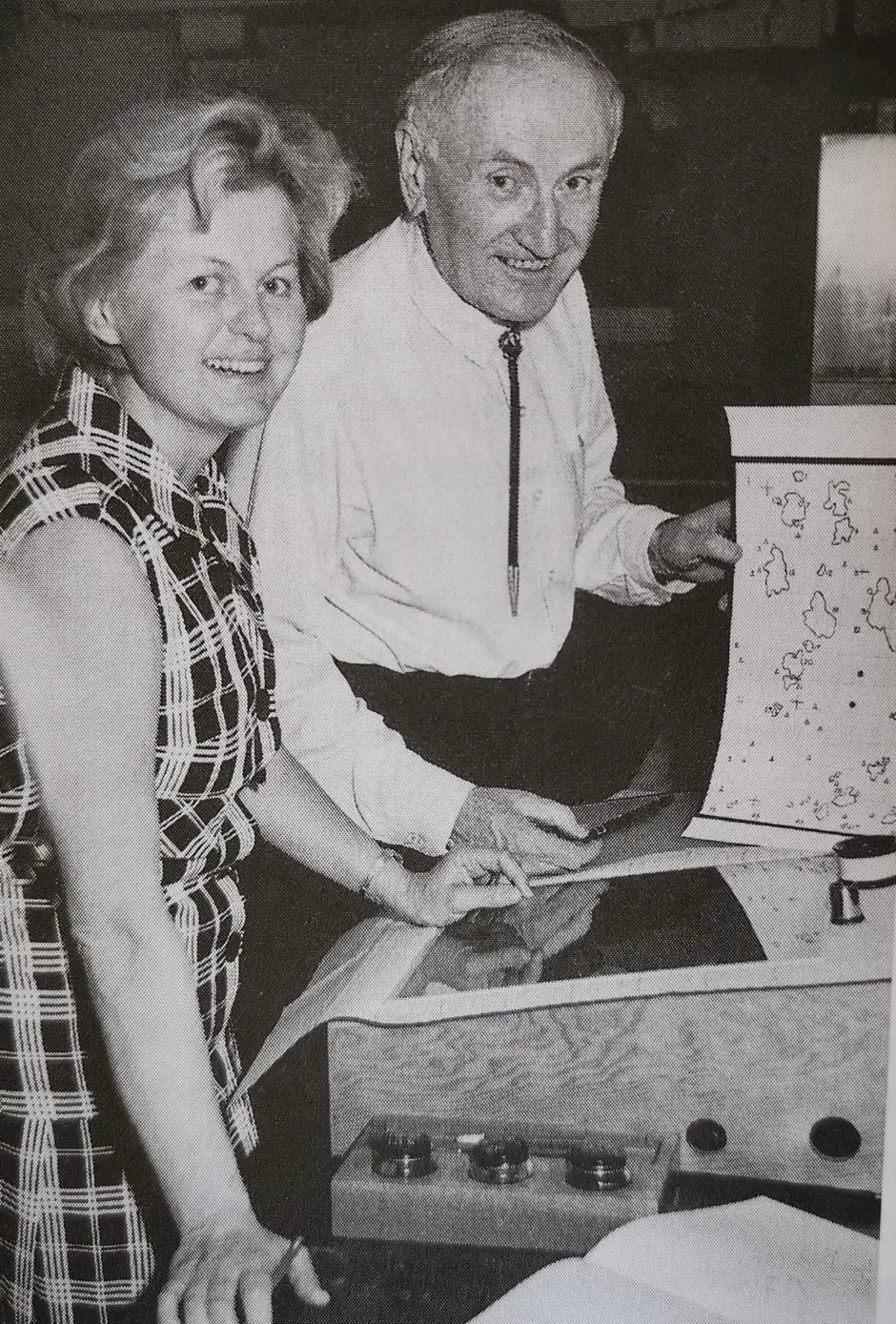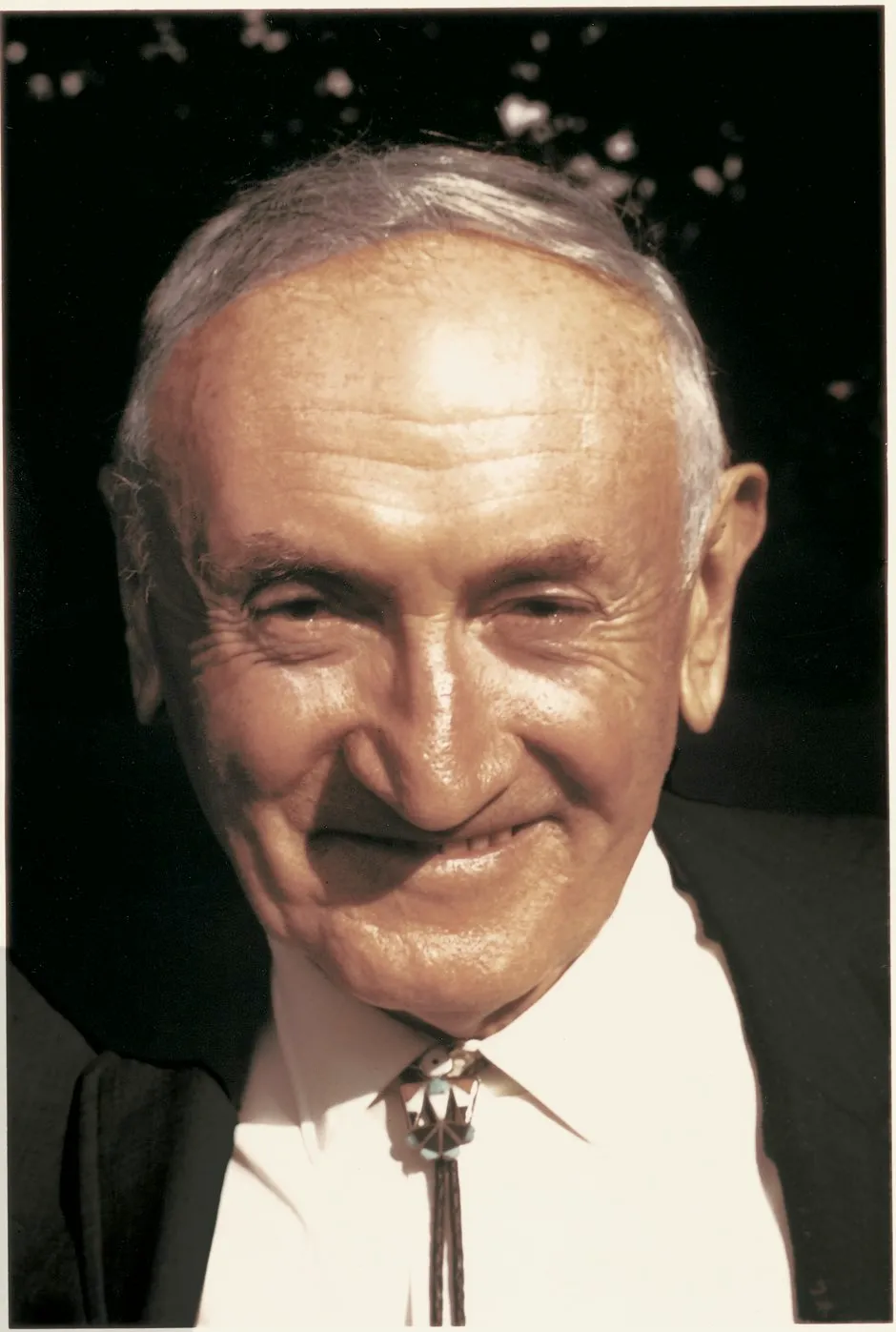On 16 October 1957, less than two weeks after the Russian launch of Sputnik caused widespread alarm in America, a reconfigured German V-2 rocket lifted off its pad in Alamogordo, New Mexico.
The V-2, Germany’s terror weapon of World War II, was not powerful enough to reach space. But at 85km above the Earth, an explosive was ignited in its nose cone, shooting a payload of aluminium balls up and out of the planet’s embrace.
The space marbles, which the newspapers called manmade moons, “were launched away from the Earth for the first time, never to return,” Caltech professor Fritz Zwicky wrote later. According to his calculations, his moonlets ended up in orbit around the Sun. In his mind, he had not only matched the Soviet achievement, but bettered it.
Read more about great scientists:
- John Bardeen: the greatest physicist you've (probably) never heard of
- Arthur Eddington: the champion of relativity
- Alexander von Humboldt: the first environmentalist
The American government disagreed, as did most observers. It wasn’t until January 1958 that the United States officially joined the space race with the successful launch of Explorer 1.
Years later, a Caltech grad student named Robert Kirshner was working in a sub-basement office sarcastically called the “engine room” when Zwicky, who occupied a nearby office in retirement, stopped by. Kirshner, now the Clowes Professor of Science at Harvard, was familiar by that time with the old man’s diatribes against the “grey thinkers” who had tormented him and failed to recognise his genius.
His surly growl made Kirshner think of a pirate, as did the ever-present eye-patch he wore while searching old photographic plates for supernovae. On this occasion, however, Zwicky had a question for the young man. What was the first object to reach space? “Sputnik,” Kirshner answered confidently.

“Wrong!” Zwicky shouted. He then told the story of his manmade moons. Kirshner nodded, humouring the grumpy old man. Some time later, Kirshner visited the National Space Hall of Fame in New Mexico, and was stunned to see a plaque commemorating Zwicky’s achievement.
I’ll be darned, thought Kirshner. The more he investigated Zwicky’s claims, the more impressed he was.“Because he was so eccentric and abrasive, he was given less credit than he should have gotten,” Kirshner said.
That is a fitting epitaph for Fritz Zwicky, the Swiss astrophysicist who predicted neutron stars and dark matter, spawned a worldwide craze over supernovae in the 1930s, was a pioneer in jet propulsion and, along the way, managed to alienate just about every important astronomer of the 20th Century.
Read more about dark matter:
Kip S. Thorne, Caltech’s Feynman Professor of Theoretical Physics, and a 2017 Nobel Prize winner for gravitational wave research, compared Zwicky’s “amazing sense of how the Universe works” to the insights of Richard Feynman and Albert Einstein.
His more unusual ideas, such as moving outer planets closer to the Sun to make them habitable, so that peace-loving people could escape evildoers on Earth, remind others of Johannes Kepler, the German mathematician who formulated the laws of planetary motion.
“Kepler was a mystic and astrologer. But in this big mass of nonsense there are the three Kepler laws,” said Caltech’s George Djorgovski, another Zwicky fan.

Still others, noting Zwicky’s Renaissance flair and refusal to confine himself to any one discipline, are reminded of Tycho Brahe, the 16th-Century Danish nobleman and astronomer who lost a chunk of his nose in a duel with a colleague over who was the better mathematician.
In truth, he was all those things, part eccentric, part genius, completely uncontained.
Fritz Zwicky was born in Bulgaria in 1898, but considered Switzerland his homeland, despite the fact that he was as likely to smear his fellow citizens as “the stupidest people on Earth” as he was to praise their pacifism.
He came to the United States as an expert in the structure of crystals, but soon turned his attention to the heavens. In the early 1930s, he found fame by predicting that after exploding a supernova would collapse to a neutron star only 30 kilometres across. A teaspoonful of the stuff would weigh 4.5 million kilogrammes.
The neutron had only been discovered the year before he made this outlandish prediction at a Stanford University conference. His theory was so heretical that, according to a letter he wrote to a friend, “(I)f the indignation of the foreign physicists takes on the same dimensions as those of the local ones, then we will have to fear for our lives. When I presented the new theory here in a seminar there was such an uproar that some of the more conservative gentlemen nearly died of heart attacks.”
Learn more about another scientific genius, Leonardo Da Vinci, on our podcast:
The flippant tone of the letter revealed Zwicky’s preternatural ability to regard opposition not as something to be feared or avoided, but as proof that you were on the right track. It was a characteristic that was key to his discoveries, and it underpinned his reputation as a difficult, enigmatic man.
Like the great forces he charted, Fritz Zwicky distorted the orbits of everyone who came in contact with him, attracting many, driving just as many away.
A lifelong skeptic of the expanding Universe, he called those who believed in it “horses asses”. But his preferred term for an enemy was “spherical bastard”, employing the language of physics to describe a person that, no matter what frame of reference you used, remained a bastard.
Prominent among those enemies was Walter Baade, the German astronomer with whom he theorised neutron stars. When their working relationship soured, stories circulated that Zwicky threatened to kill Baade. When a rattlesnake was discovered in the dome of Zwicky’s favourite 18-inch telescope on Palomar Mountain, California, he accused Baade of planting it.

In World War II, Zwicky’s work on jet fuels that helped heavily-laden planes get airborne faster not only contributed to his becoming the first foreigner to win the Medal of Freedom but also set the stage for the billion-dollar post-war rocket industry.
Despite this, and typical of the way Zwicky’s career fluctuated wildly from breathtaking achievement to humiliating embarrassment, Zwicky became one of the highest-profile victims of McCarthyism, the US government’s programme of exposing supposed communists, losing his top-secret clearance after refusing to become an American citizen.
His reasoning was typical of Zwicky: naturalised citizens were second-class, he said, because their citizenship could be revoked. It went without saying that second class was a status Fritz Zwicky would not accept.
Zwicky’s interests were too wide-ranging to confine himself to science. He raised funds for children orphaned by war, and helped restock the scientific libraries of the warring nations, using books appropriated from Caltech without permission.
Read more about the space race:
- Nazis, magic and McCarthyism: the dark history of early American space exploration
- The Space Race: how Cold War tensions put a rocket under the quest for the Moon
He launched a public campaign against Southern California smog in the 60s and formulated a new type of reasoning he called Morphology, which he believed would condemn Communism and Fascism to the trash heap of history.
Zwicky was part of the generation that believed science had the power to solve problems that had bedeviled humankind for ages. And he held on to that belief even after others, shocked by the devastation wrought by the atomic bombs dropped on Japan, began to question whether science had the answers after all.
When Richard Feynman said that when it came to politics, scientists were “as dumb as the next guy,” Zwicky was outraged, accusing Feynman of spiritual cowardice.
Fritz Zwicky refused to believe he was as dumb as the next guy, about anything. In the end, however, it was his feuds, rather than his accomplishments, that coloured his memory in the years after his death in 1974, at the age of 75.
Much of his work was forgotten or conveniently ignored. The final blow to his reputation was being kicked off the great, 200-inch telescope at Palomar, despite finding more supernovae, 120, than anyone in history to that time.
“Those spherical bastards threw me off the 200 goddamn inch telescope! Made up a special rule. Grrr. Them I could crush,” he raged one day at Robert Kirshner.
The ongoing hunt for dark matter has reawakened interest in Zwicky, and, since those he feuded with are long gone, softened his reputation. To many, his stranger ideas, such as the mole-like Terrajet that would use a form of jet propulsion to burrow through the planet, are now seen as evidence of a beguiling eccentricity, of an imagination so penetrating that lesser minds could not grasp their genius.
The error was no longer Mr. Zwicky’s, but the world’s. Just as he knew all along.
Zwicky: The Outcast Genius Who Unmasked the Universe by John Johnson Jr (£28.95, Harvard University Press) is out now.
Follow Science Focus onTwitter,Facebook, Instagramand Flipboard